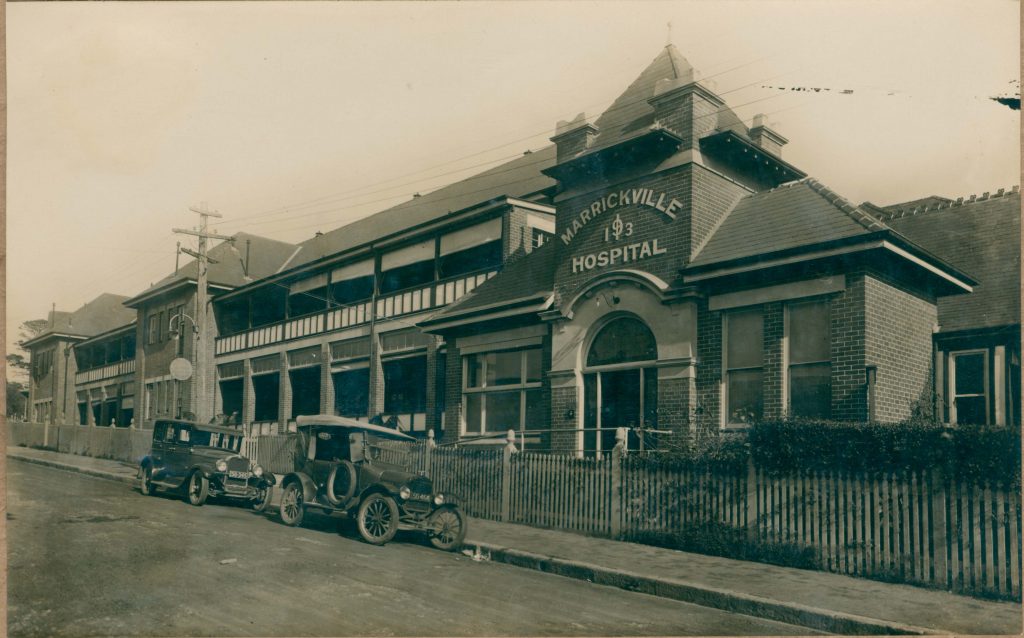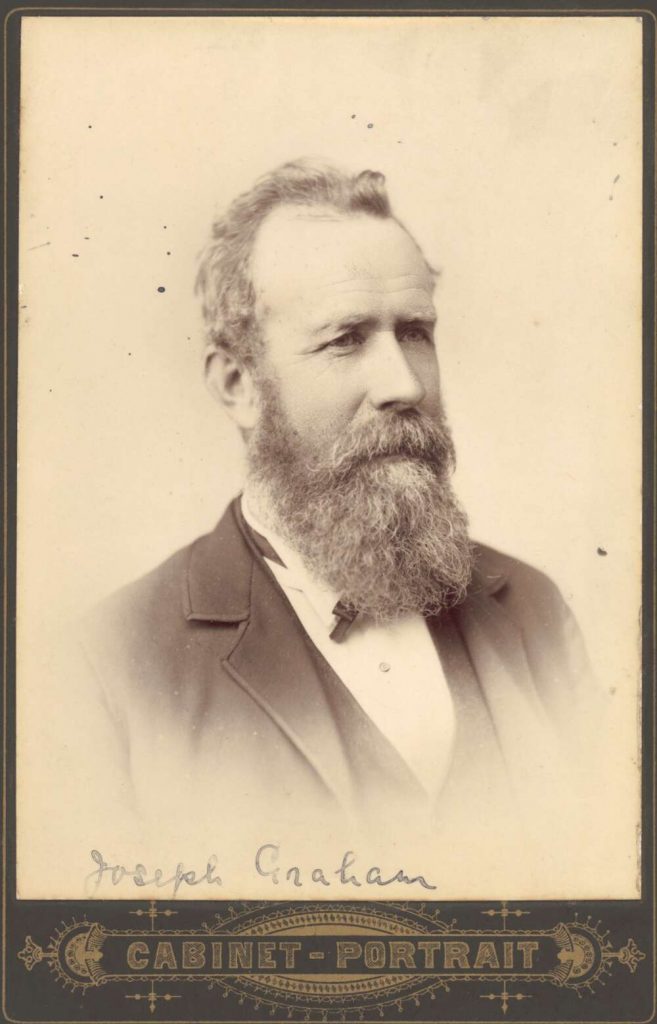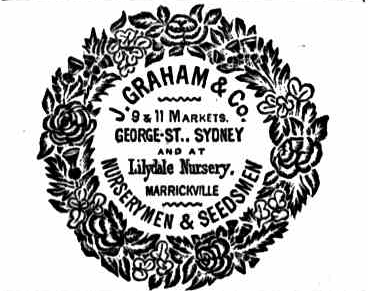As we embark upon the opening of the New Marrickville Library we celebrate the rich history of the Old Marrickville hospital site. With up and coming history tours of the new library there will be exhibitions and events delving into the history. For now we hope you enjoy this post with a timeline of the sites history.

The land on which the former hospital, now Marrickville Library was first granted to Thomas Moore in October 1803. It was the largest grant of land in what would become known as Marrickville Municipality (5 December 1861).
The name of the new borough was taken from the estate of Mr. Thomas Chadler, which was named after his native village of “Marrick,” in the north of Yorkshire, England; the addition of “ville” was added to make it sound more gentrified.
Around 1830 the land was acquired by local legend and wealthy landowner Robert Wardell. Following Wardell’s death in 1834 the estate was subdivided into smaller farms largely for market gardening.
Dr Robert Wardell (landowner, barrister, and publisher) was famously murdered on 7 September 1834 by two trespassers on his vast estate as he rode to services at St James’ church, Hyde Park.
Marrickville in 1830 was thinly populated with several hundred persons, and only a small proportion of the land had been cleared and cultivated. The principal occupations were rural: growing grain, timber cutting, and maintaining cattle, pigs, and poultry. Because roads were poor and transport slow and expensive Marrickville remained an isolated rural settlement well beyond the limits of Sydney.
The 1830s marked the beginning of a century-long process of subdivision when the larger estates were broken up into smaller and smaller allotments.
Population expanded from several hundred in 1830 to 9,734 in 1871.
1830s saw the beginning of raw material industries such as brick-making and pottery works. By 1861 Marrickville was far more self-sufficient; many local industries catered not only for the surrounding population but also Sydney.
References: 1927 – History of Marrickville Hospital. Marrickville – Rural Outpost to Inner City (Richard Cashman & Chrys Meader
The Brick Pits: by the late 1880s many of the market gardens were converted into the more profitable brick pits, sometimes by the same family. The loamy clay soil once used to grow vegetables to feed the population was now converted to bricks to house it. At first the bricks were made by hand, but with the introduction of steam-made and then machine-made bricks, Marrickville took on a semi-industrial character. It became home to the largest brickmaking businesses in Sydney. In 1888 Johnston Brothers was producing up to 300,000 bricks per week
Following the end of the banking crisis in 1896, confidence was growing in the locality, particularly within manufacturing and this influenced Marrickville to prosper.
The building boom of the 1880s played a major role in the transformation of Marrickville from village to suburban identity.
Brick-making had a lasting impact on the physical and social environment of Marrickville. Grand homes were demolished to make way for more and more brick pits, while the large estates were rapidly subdivided to provide cheap housing for the population needed to work in the brick pits or large potteries, such as Fowlers. Marrickville was now the suburb of the working family.
Housing demands greatly stimulated industries associated with building – notably brick-making and quarrying. Prior to 1870s brick-making had been a laborious hand-made operation. The introduction of steam-made and machine-made bricks led the industry to expand and become more profitable and by the 1880s Marrickville had the largest brickmaking operations in Sydney – laying the groundwork of an industrial based economy in the 1890s.
From 1871 to 1891 Marrickville was transformed dramatically to a much more densely settled suburban communities. The population of the now 5 municipalities increased more than 5 times in the two decades: from 9,734 to 53, 264.
Improved transport to the city and the arrival of railway stations in the 1850s stimulated land sales and development.
References: Dictionary of Sydney 2008 by Chrys Meader. Republished Marrickville Heritage Society Blog
Joseph Graham (1828 – 1894), born in Perthshire, Scotland, came to Sydney in 1853. Shortly after his arrival Graham acquired land in the Marrickville area: the estate and house he built on it were named Lilydale. The estate was one of the largest in the Municipality at the time. Graham, a professional seed and, nurseryman employed many gardeners on the estate.

“Joseph Graham, of the Old Sydney markets, Mayor of Marrickville” –In ink on reverse. “… E. Rusfeldt artist photographer, 488 George Street …” –Printed on reverse.
Graham was elected to Marrickville Municipality in 1868 and was an alderman until February 1890. He was elected mayor a record nine times.
Graham was a deeply religious and presented land in Illawarra Road for the erection of the Presbyterian Church – since demolished.
Graham was a foundation member of the National Parks and Wildlife Trust and the Metropolitan Water, Sewage and Drainage Board. He was also treasure of the Royal Horticultural Society of New South Wales.
One of his biggest public achievements as Mayor was resolving the Tramvale disaster – in which several properties were flooded in the low-lying lands of Marrickville due to run off from the surround high suburbs of like Newtown, Petersham
NB: After the disaster of the Tramvale subdivision floods, where dodgy developers were blamed for building homes on swamplands / knowingly prone to flooding – Graham was a key agitator in the development of the Sydenham Pumping Stations.

The Lilydale estate was subdivided shortly after his death on 21 January 1894. Marrickville Town Hall and Marrickville Hospital stand on part of his land. It is fitting that Graham Avenue, named after him, was planted with date palms in the 1930s and presents one on the most striking landscapes in the municipality.
References:
Marrickville – Rural Outpost to Inner City (Richard Cashman & Chrys Meader, 1997 edition)
